22 Heart Murmurs
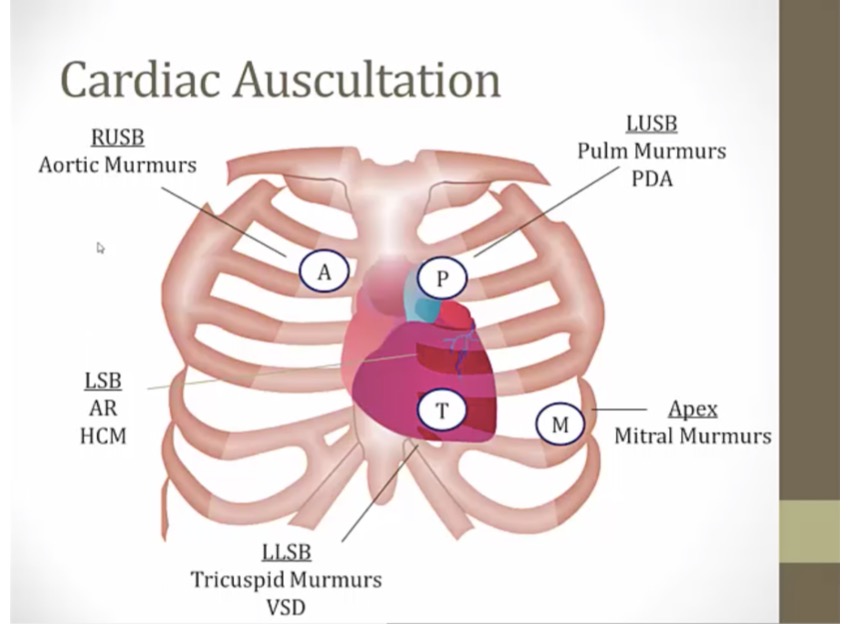
- LSB: Erb’s point, no specific for one valve, aortic regurge
- Apex: 5th intercostal space, mid clavicular line
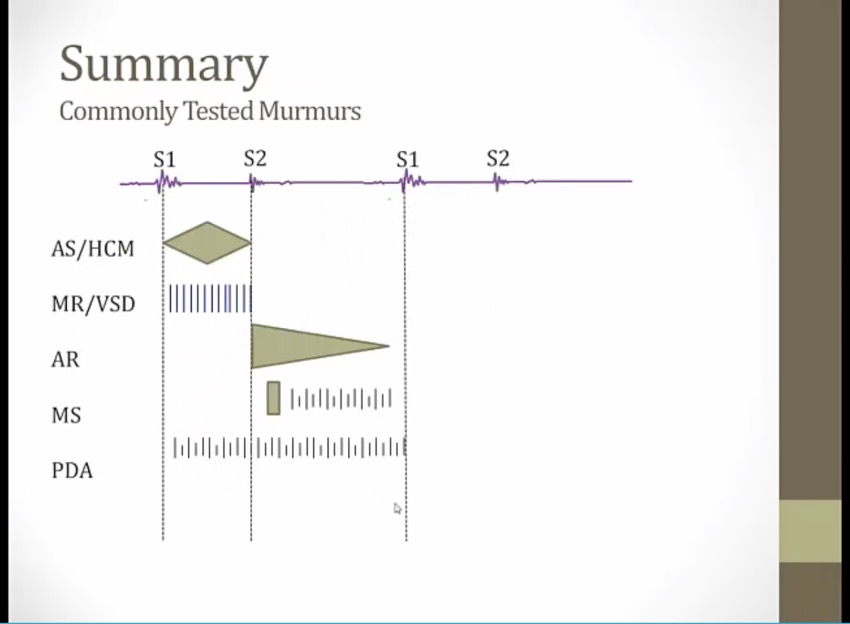

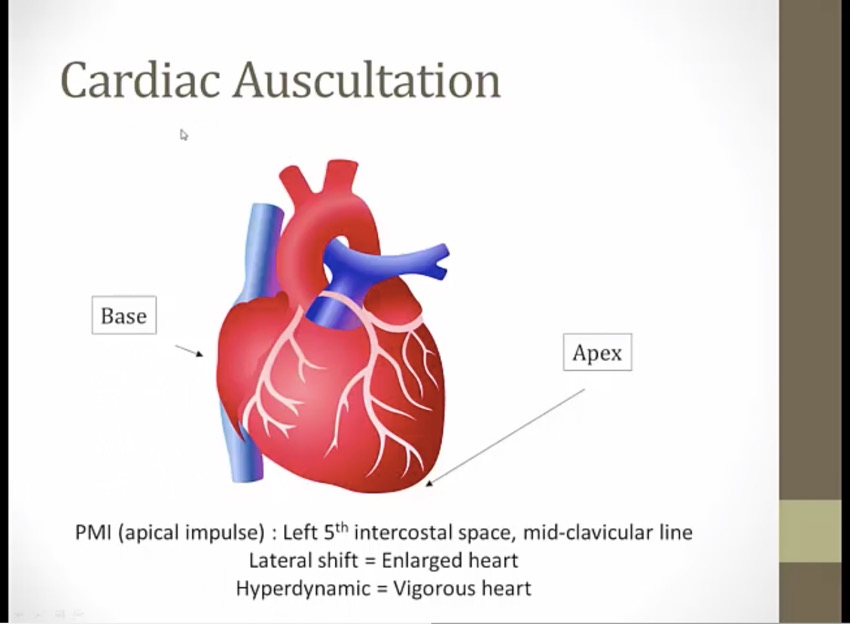
- Apex: PMI. If not at mid clavicular: enlarged
- hyperdynamic: pushing very hard against finger, sympathetic driving
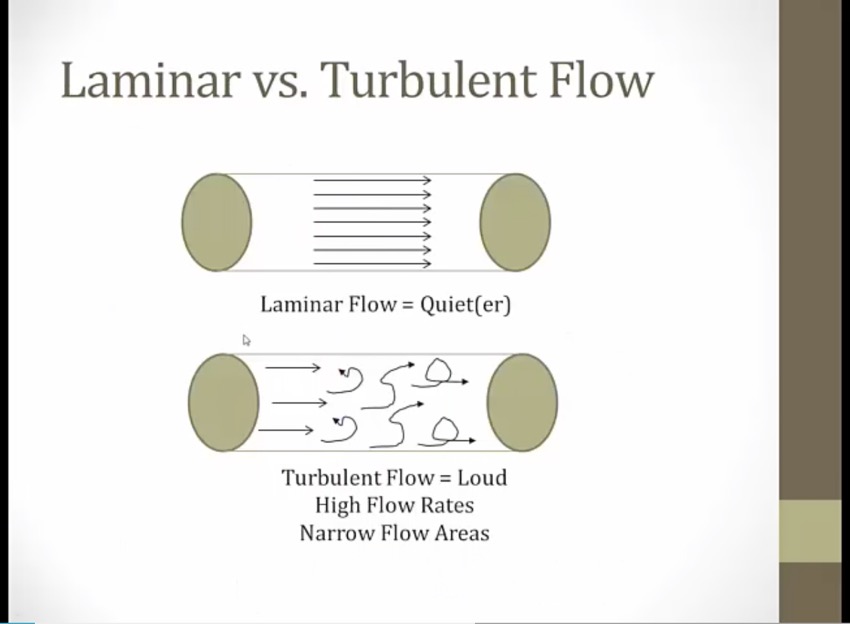
- laminar: slow rate, no murmurs
- turbulent: fast speed, very loud. Creates heart murmurs

- closer together: S1 - S2. Farther apart: S2 - S1

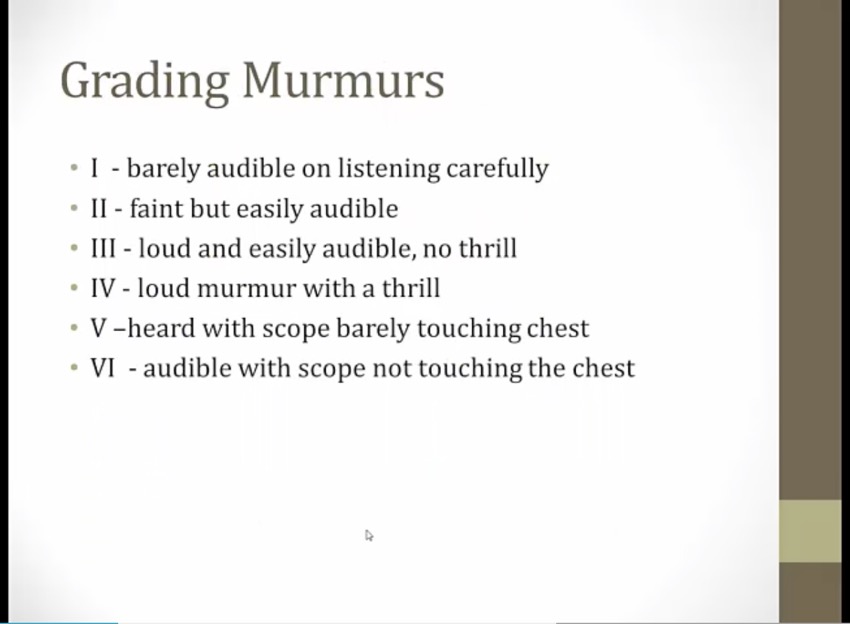
- in real life, 2 or 3
- on exam, maybe up to 4, 5
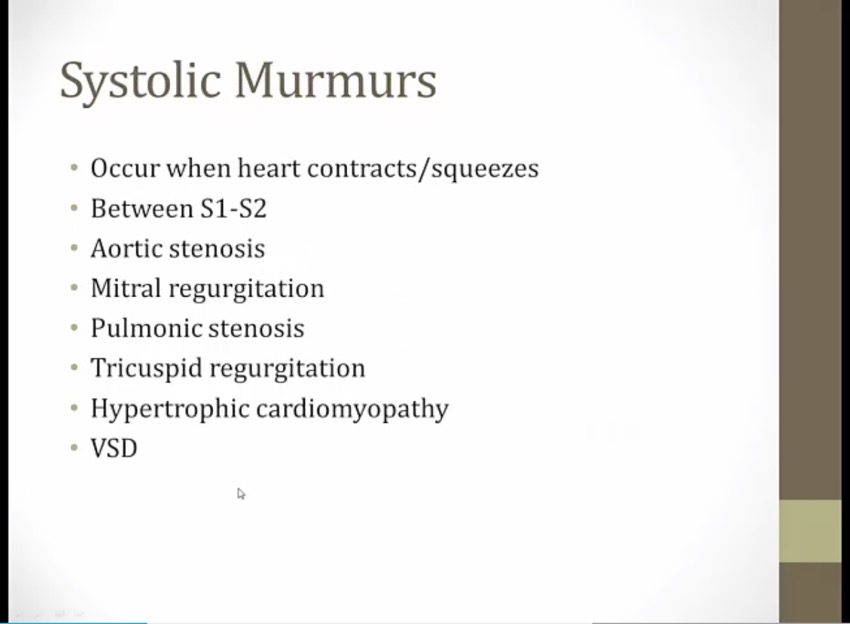
- hypertrophic cardiomyopathy: heart contracting, sound created by thick septum blood has to flow around
- VSD: blood pushed through a hole


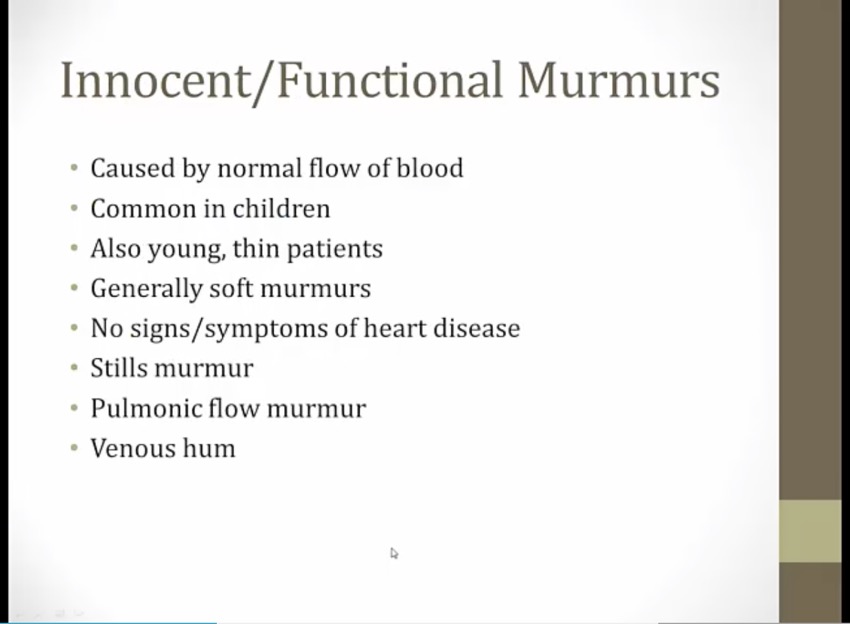
- stills: heard in children, all normal murmurs
Aortic Stenosis
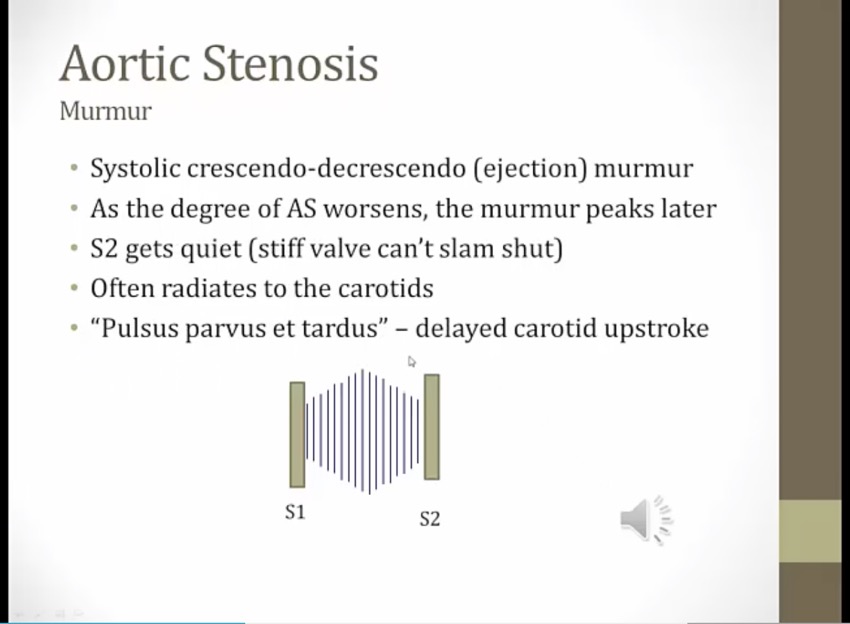
- crescendo-decrescendo: ejection
- pulsus parvus (weak) et tardus (late): put finger on pulse, sluggish/weak upstroke of carotid compared to normal vigorous pulse


Aortic Regurgitation
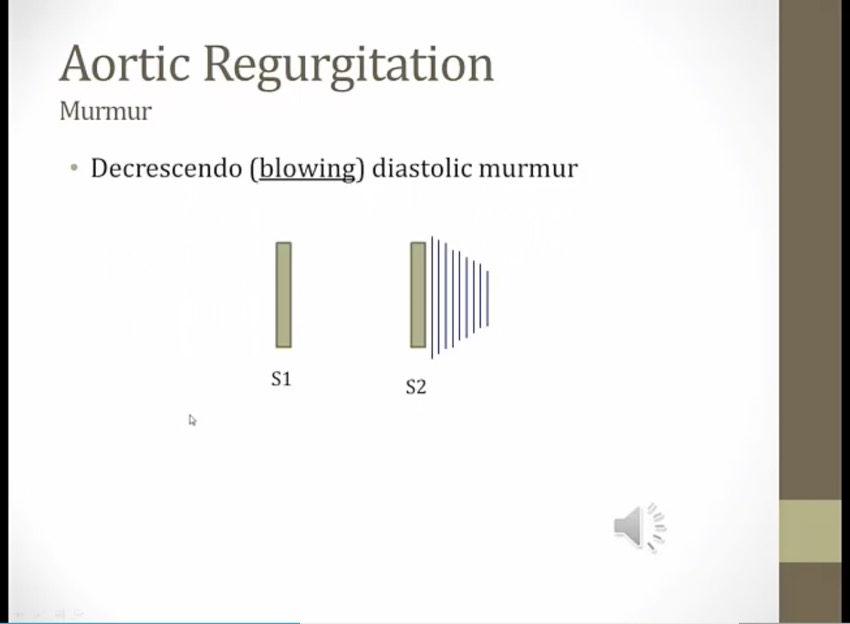
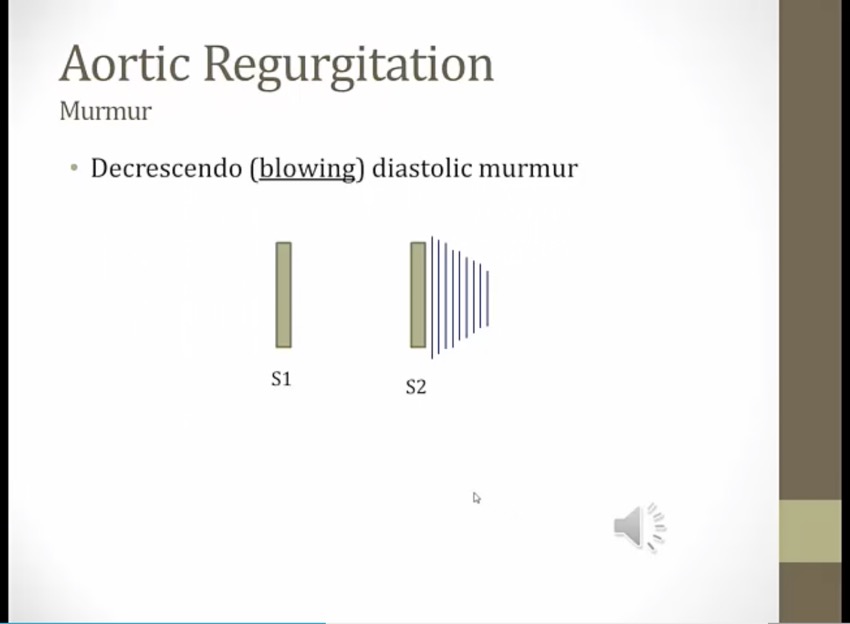
Mitral Regurgitation
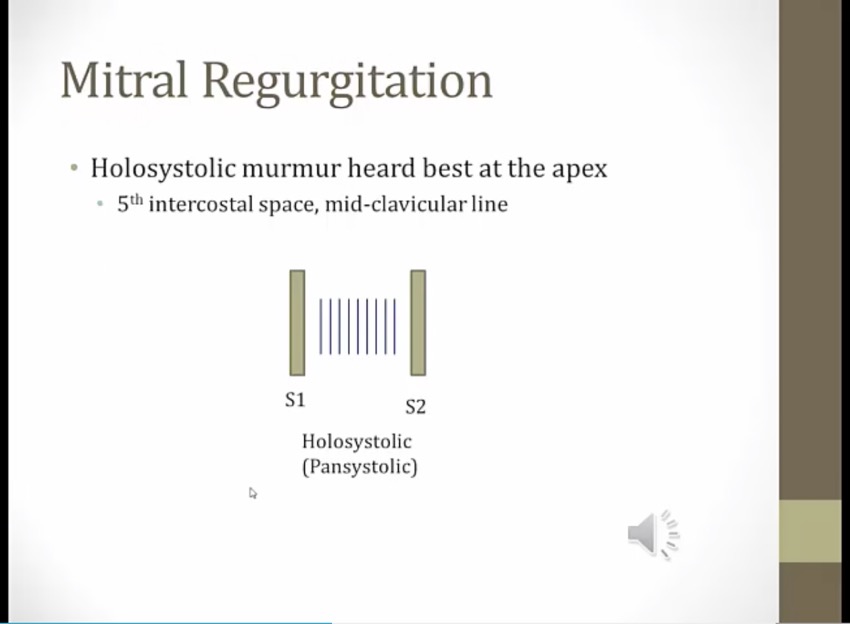
Mitral Stenosis

- opening snap after S2, like S3, occurs because stiff mitral valve leaflets has to open in diastole, followed by holo diastolic murmur
- left sided S3/S4 both caused by rapid filling of ventricle, doesn’t happen in stenosis
- more severe stenosis, quicker opening snap occur: LA pressure rises with severe stenosis. When very high, OS happen quicker
Tricuspid and Pulmonic

- inspiration: increased venous return to right side, right murmurs louder
- inspiration: dilate veins in lungs, drops venous return to left side of heart, quieter
- like sucking blood into lungs, pull blood away from left and pool in right
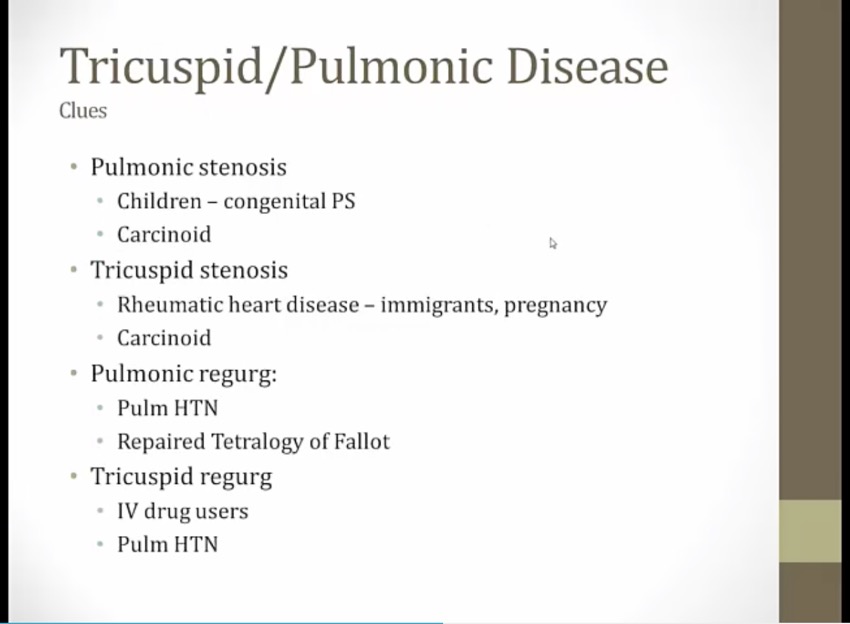
- pulmonic stenosis very rare
- tricuspid: very uncommon, occur in conjunction with mitral stenosis
- pregnancy: women with asymptomatic rheumatic heart disease become sympatomatic when blood volume goes up
- PHTN: high pressure in lungs push blood back through pulmonic valve
- tricuspid: first place seeds
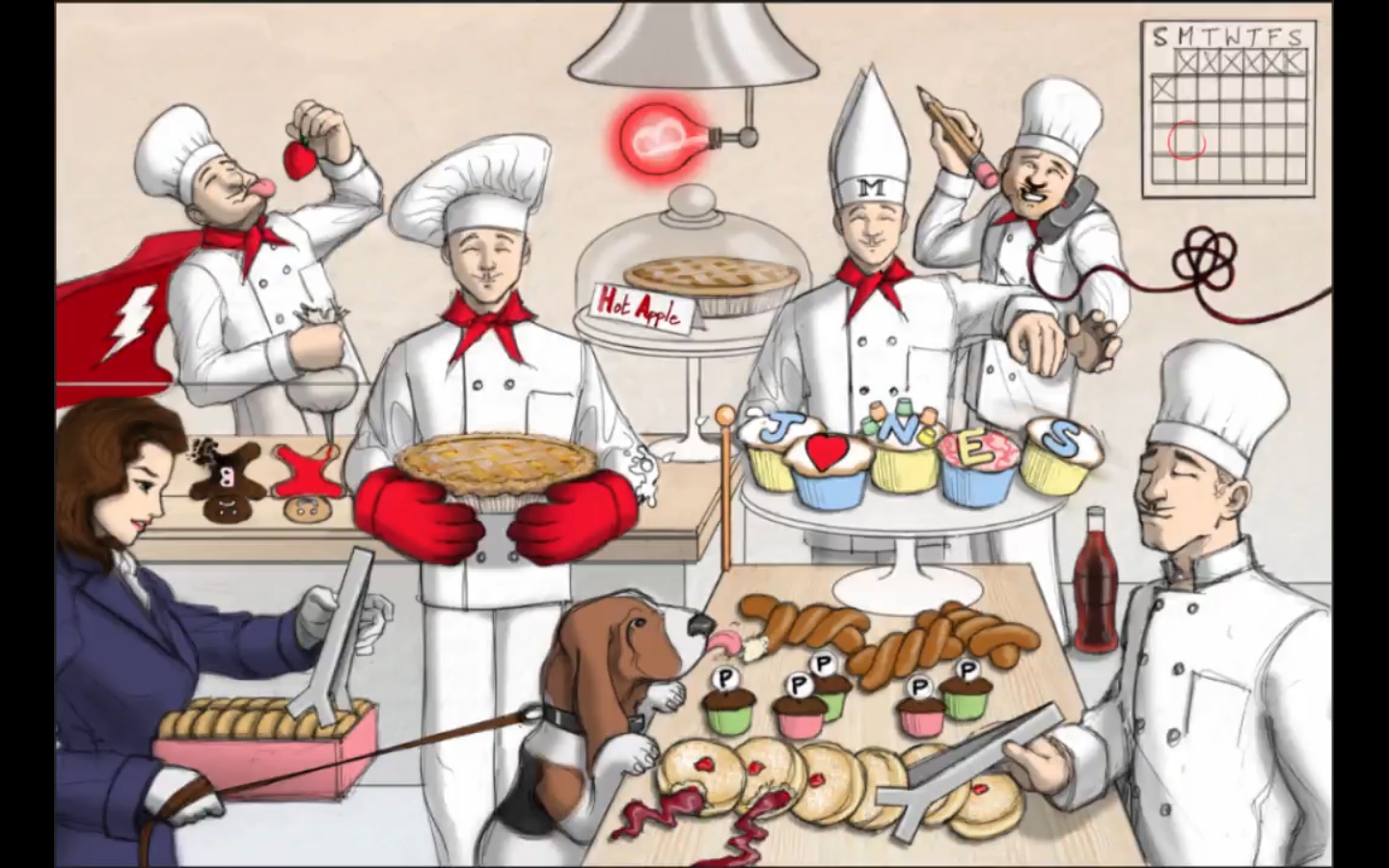
- Mitral hat: Endocarditis: affects mitral valve; M protein molecular mimicry with muscle myosins. Mitral stenosis in conjunction with tricuspid stenosis

- Running camel and mortar/pestel: acute rapid onset tricuspid endocarditis in IV drug users
Carcinoid
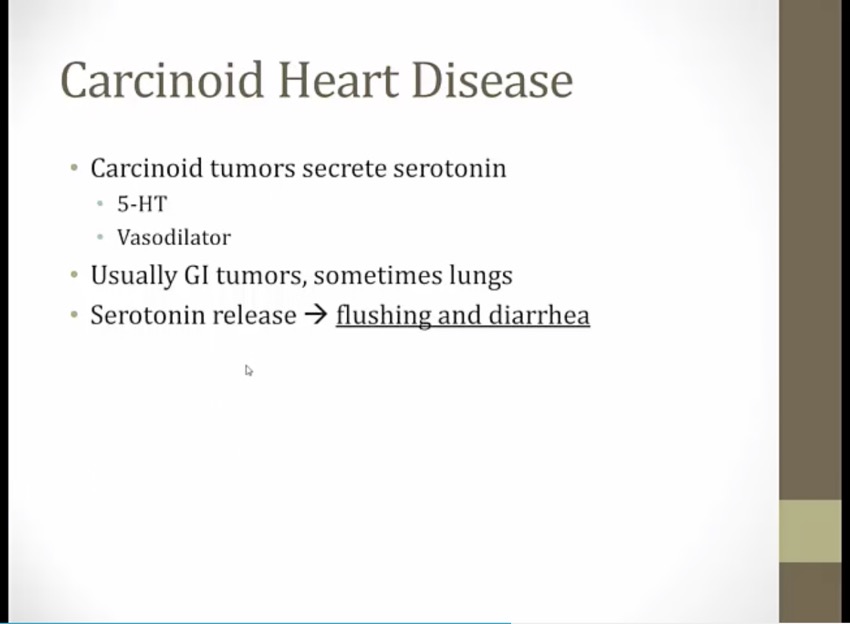
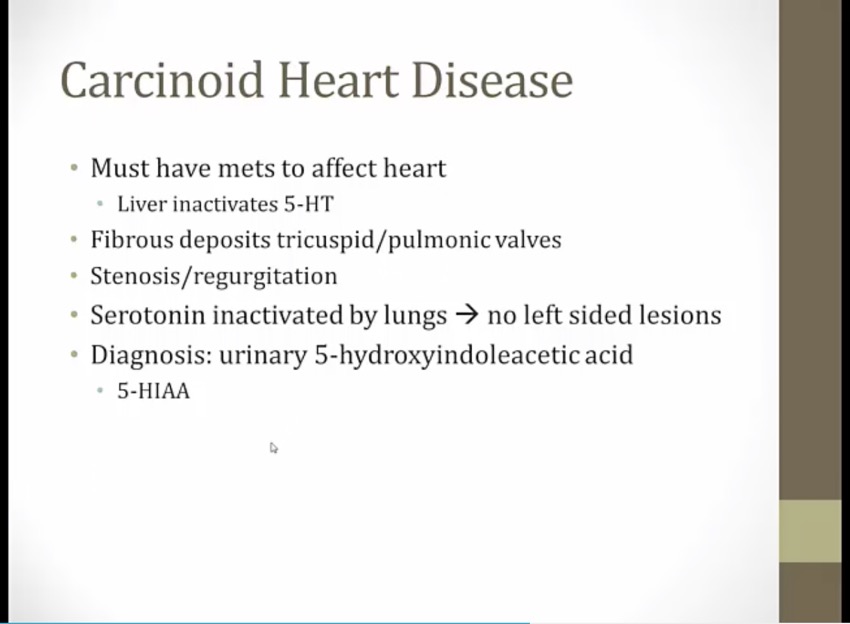
- only if met to liver to not be metabolized

VSD
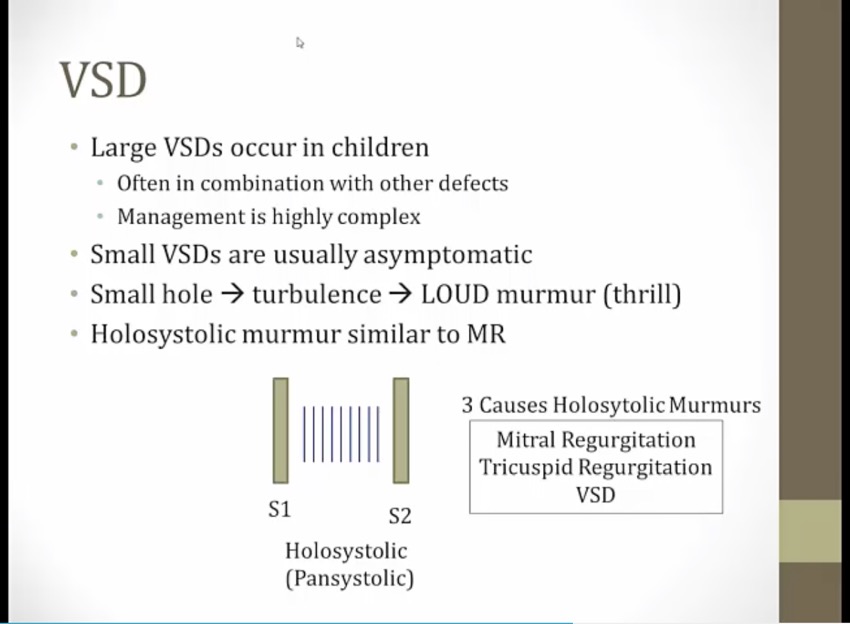
- loud murmur = sick people, severe problem, severe symptoms, HF
- very loud murmur and asymptomatic: rare, VSD (mitral, tricuspid regurg very sick with loud murmurs)

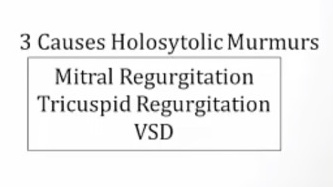

PDA
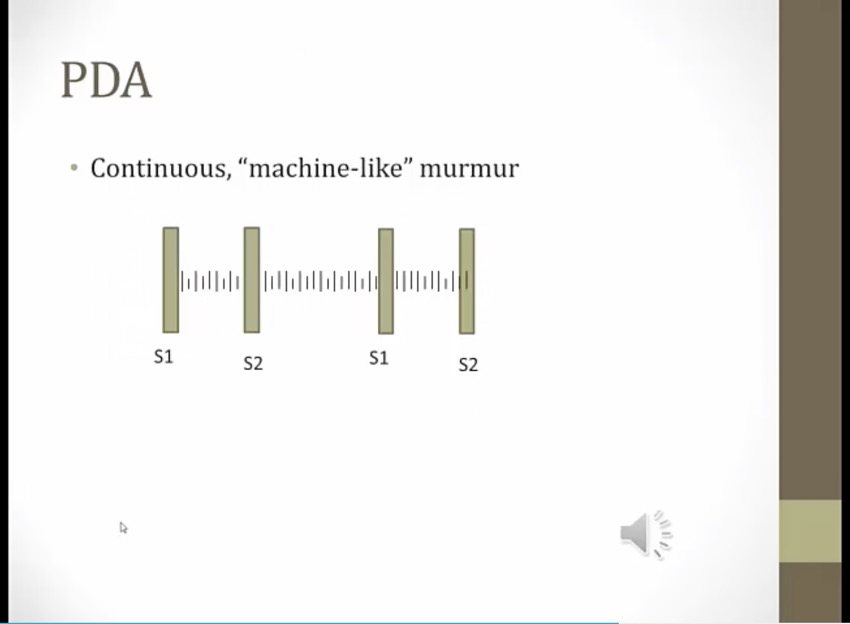
- continuous: blood flows through in all phases of cardiac cycle

Maneuvers
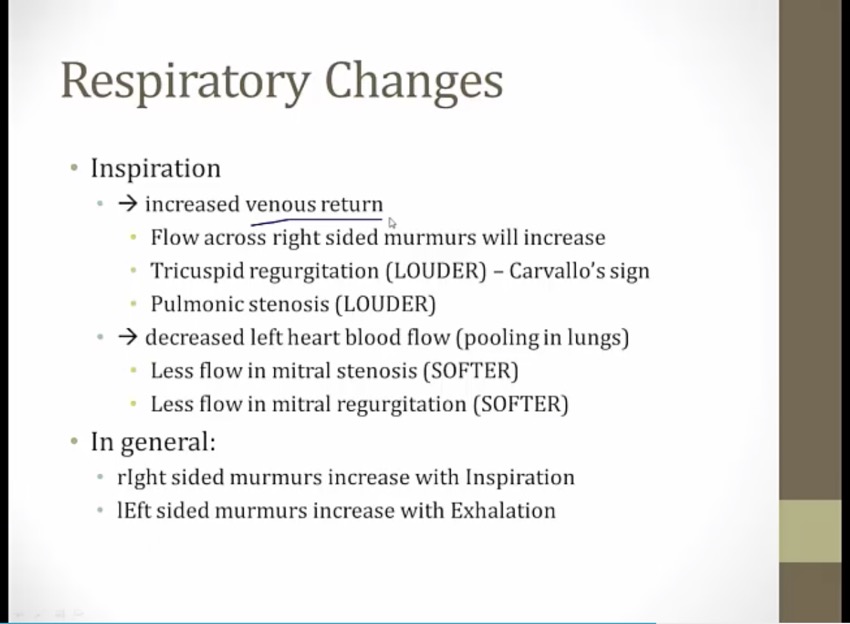
- inspire: diaphragm moves down, compresses veins in abdomen. Thorax also dilate
- inspire: dilate veins in lungs
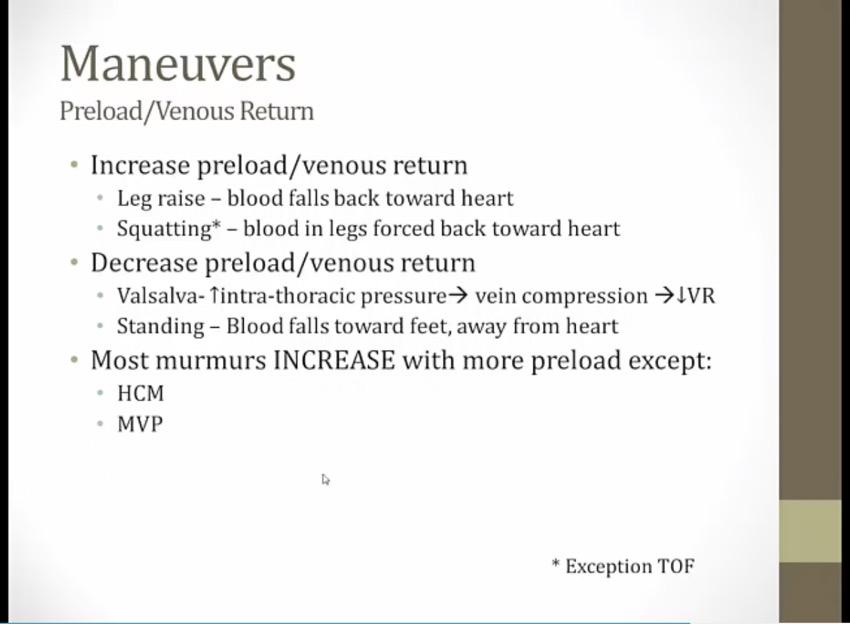
- Tetralogy of fallot squat: increase afterload, feels better, different physiology

- MVP: mitral valve bellow up into LA (bottom pic) and snap up to cause mitral regurge.
- more preload: tightens leaflets, don’t bellow quite as much, come together more firmly (top), less regurge
- HCM: thick septum gets in way of blood flowing out of LV = murmur
- more preload: septum pushed more towards right, less obstruction, less murmur
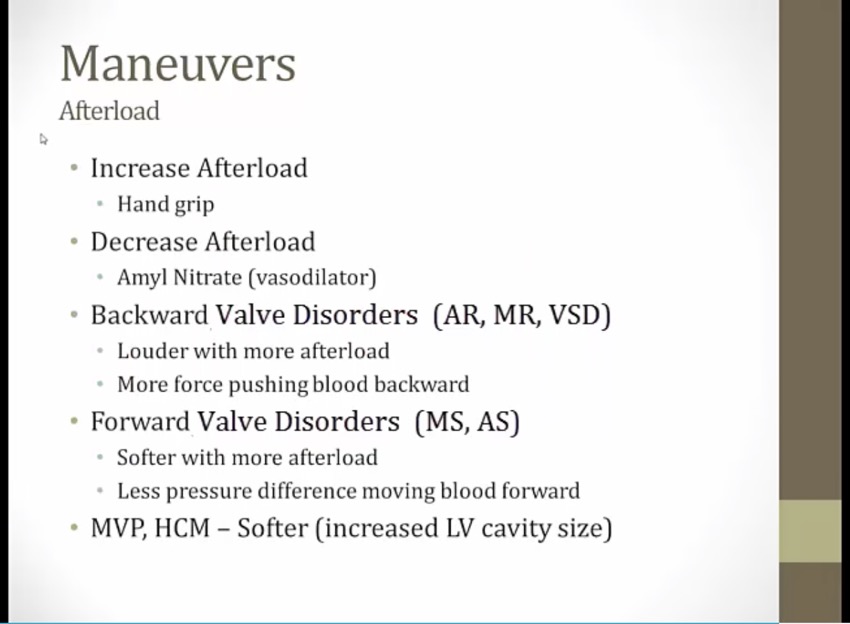
- amyl nitrate not used anymore
- AR, MR, VSD: blood flowing in wrong direction
- forward: harder for blood to flow in foward direction
- MVP, HCM: increased afterload increases LV cavity size, softer murmur
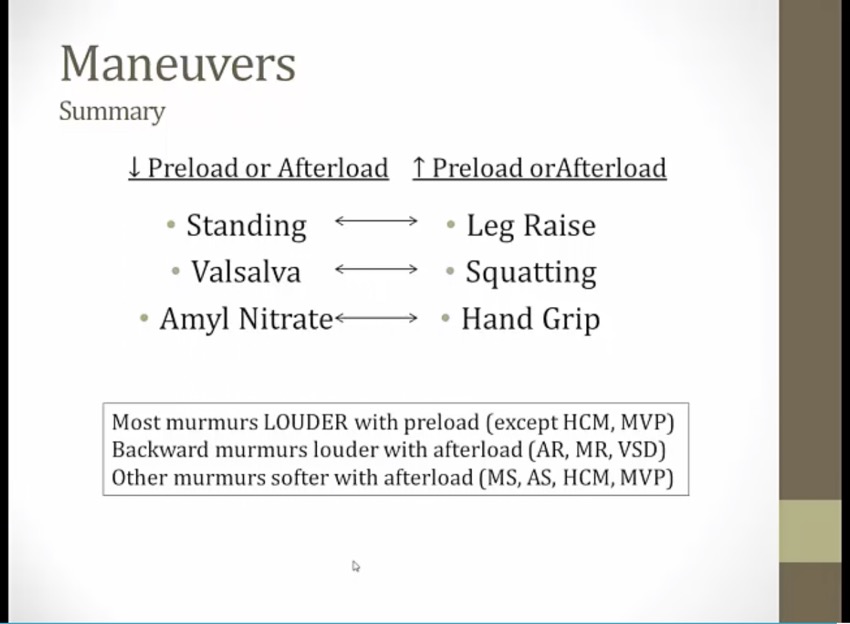

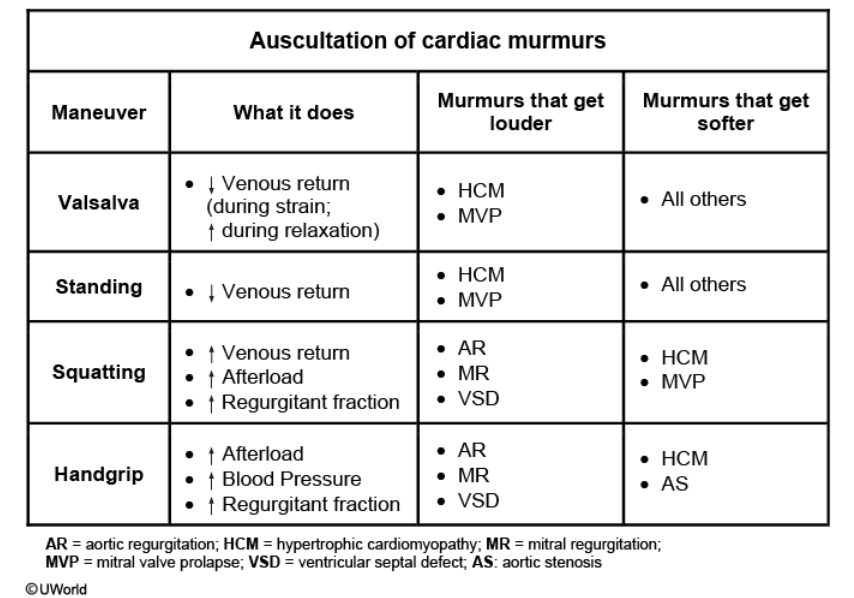
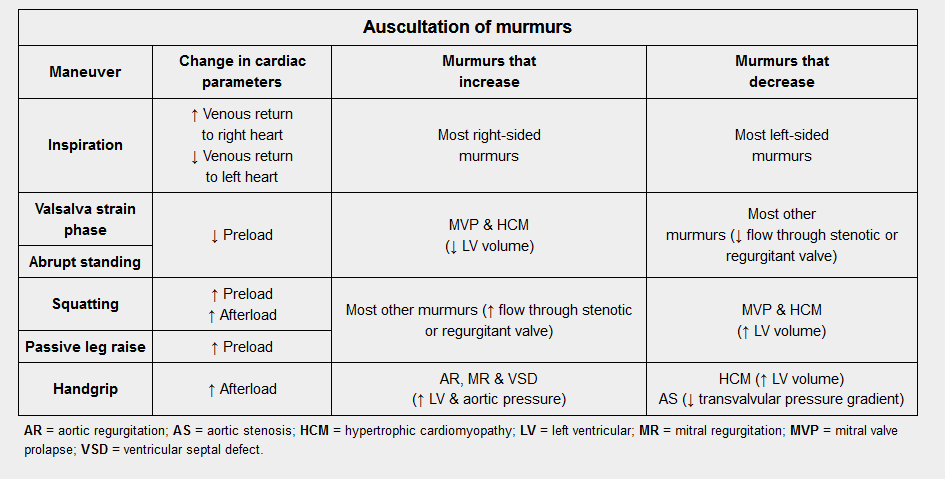
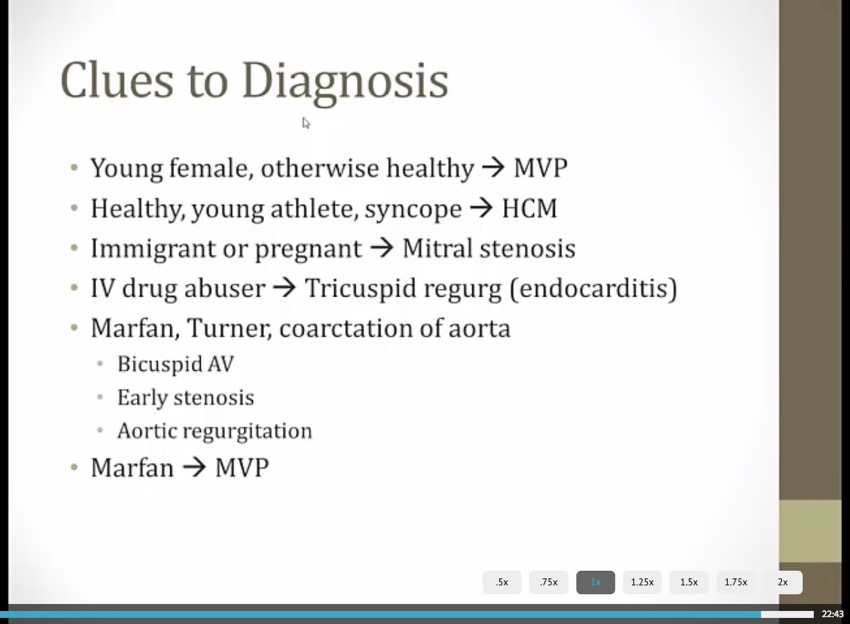
Links to this note








































